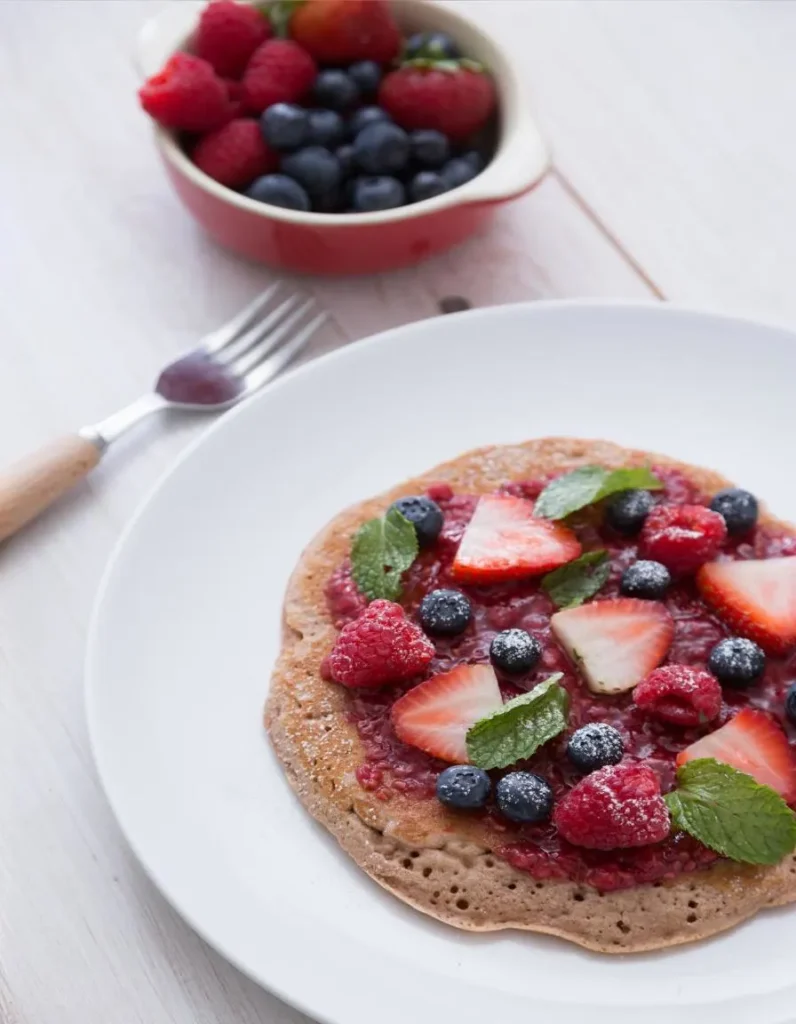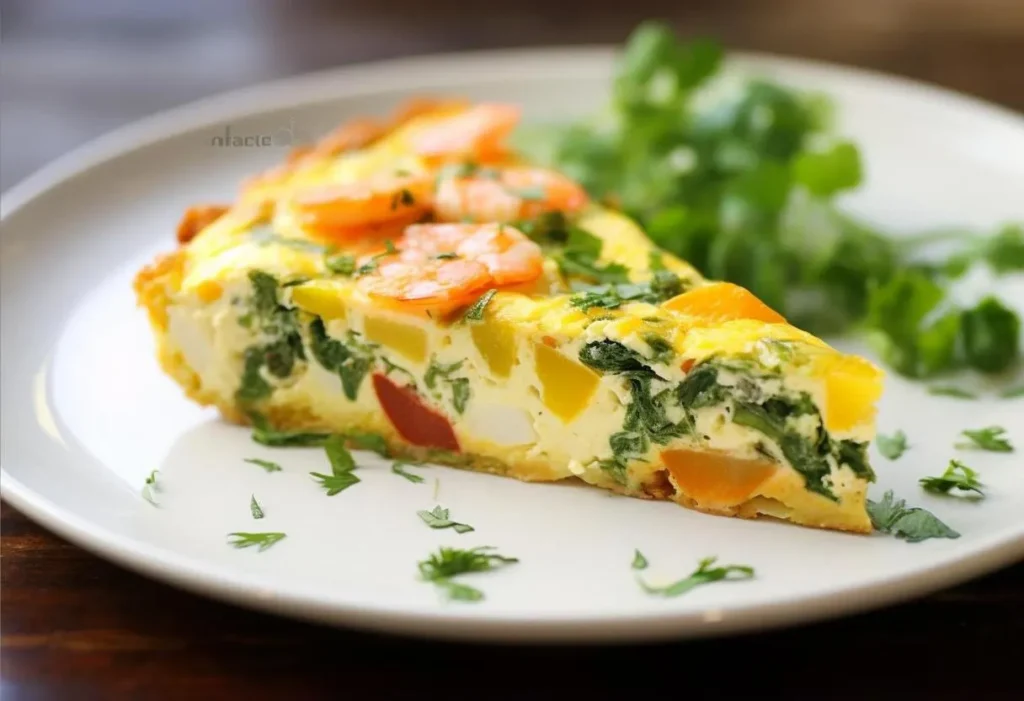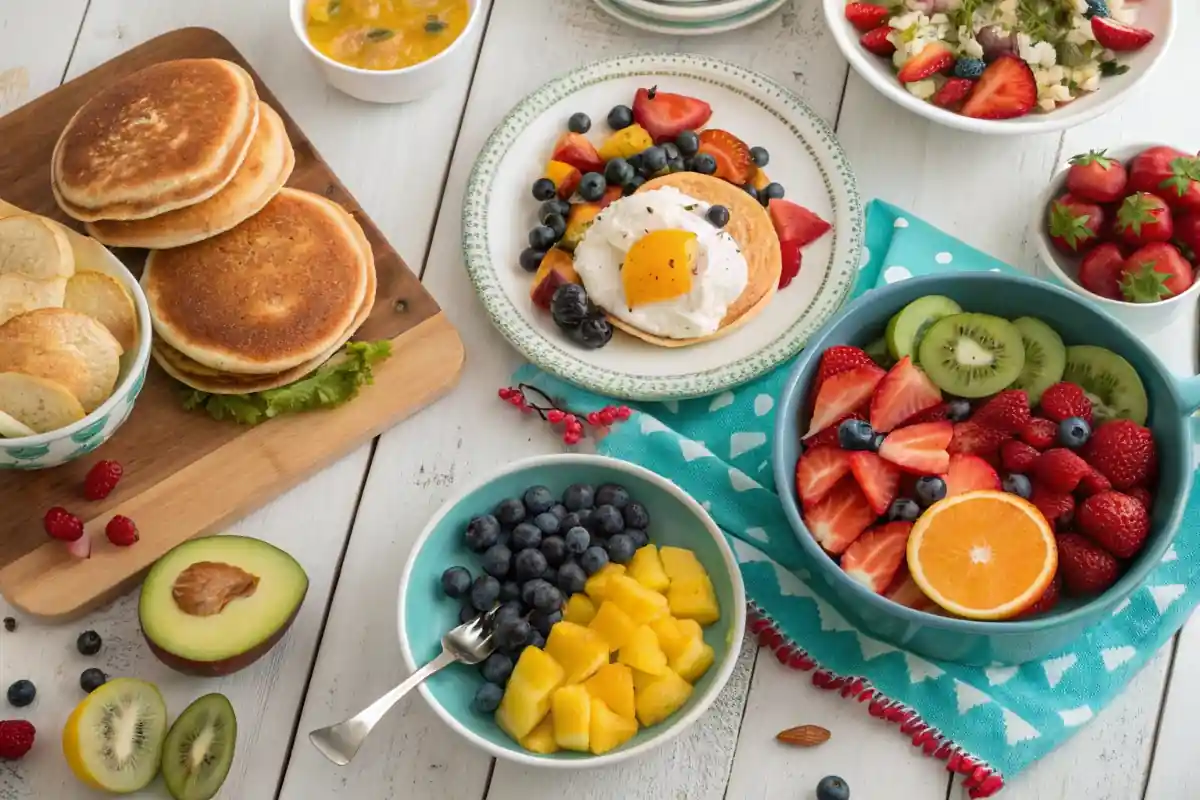Discover tips, recipes, and expert advice for crafting a delicious gluten free brunch experience.
Introduction
Brunch has become a staple in modern dining culture, particularly in the United States. People look forward to lazy weekends or special holidays where they can indulge in leisurely midday meals, often filled with sweet and savory treats. However, brunch can be challenging for individuals who need to avoid gluten. Whether you have celiac disease, a wheat allergy, or non-celiac gluten sensitivity, you may worry about accidental gluten exposure or wonder how to recreate the tastes and textures of classic brunch dishes.
In this guide, we will delve into every essential aspect of creating a satisfying gluten-free brunch—from understanding the basics of gluten and its health implications, to exploring top cooking tips and a detailed recipe you can confidently serve. Along the way, we will also offer practical advice for meal preparation, ingredient selection, and creative menu ideas that maintain both flavor and nutritional value. Therefore, if you are eager to master the art of a wheat-free brunch while keeping it delicious, you are in the right place. Let us begin this flavorful journey together!
Table of Contents
Why Gluten Matters at Brunch
When gathering for brunch, many classic dishes rely heavily on wheat-based ingredients such as bread, pastry dough, or pancake batter. Consequently, it becomes easy to overlook the hidden gluten lurking in common brunch favorites. However, understanding why gluten matters and how it can affect certain individuals is key to planning a successful gluten-free brunch.
The Basics of Gluten
Gluten is a protein found in grains like wheat, barley, and rye. It provides elasticity and structure to baked goods and acts as a thickener in various sauces. However, for people with celiac disease or other forms of gluten intolerance, consuming gluten can lead to serious health issues. Therefore, eliminating gluten entirely from one’s diet is vital to avoid symptoms such as bloating, abdominal pain, or more severe long-term damage to the body.
Health Implications of Gluten Sensitivity
In addition to celiac disease, there are those who experience non-celiac gluten sensitivity. Their reactions range from mild gastrointestinal discomfort to issues like brain fog or persistent fatigue. In all these cases, removing gluten from the diet brings significant improvement in quality of life. This is why, particularly in social settings like brunch, it is crucial to ensure that every dish served is free from gluten contamination or cross-contact.
Identifying Hidden Gluten in Brunch Foods
Brunch menus often feature pancakes, waffles, pastries, sandwiches, and sauces—many of which rely on wheat flour or other gluten-containing components. Therefore, being vigilant about food labels, ingredients, and preparation methods is essential.
Sauces and Condiments
Many sauces—such as gravies and certain dressings—use wheat flour as a thickener. Likewise, soy sauce (unless labeled gluten-free) commonly contains wheat. Therefore, it is wise to scrutinize labels for potential hidden gluten or opt for certified gluten-free condiments.
Breading and Batter
Anything coated in breading or batter (e.g., fried chicken or battered vegetables) typically relies on wheat flour. In a gluten-free brunch, you can substitute cornmeal, crushed gluten-free cereal, or a blend of rice flour and starches to achieve the same crispy texture.
Processed Meats
Some breakfast meats are processed with wheat-based fillers or seasonings. Checking labels or purchasing products labeled “certified gluten-free” is the safest bet. Similarly, always confirm that you are using gluten-free spice mixes or marinade ingredients.
Creating a Gluten Free Brunch Menu
Crafting a delicious brunch without gluten does not mean sacrificing flavor or variety. In fact, there are numerous naturally gluten-free foods and innovative ingredient substitutes available.
Embracing Naturally Gluten-Free Foods
Fruits, vegetables, eggs, dairy (if you tolerate lactose), and many grains like quinoa or millet are naturally gluten-free. In addition, meats, poultry, fish, and legumes can all be enjoyed in a gluten-free brunch. Using whole foods is an excellent way to ensure you know exactly what you are eating while reaping maximum nutritional benefits.
Essential Gluten Free Substitutes
- Flours: Almond, coconut, rice, and buckwheat flour are just some of the alternatives you can use in pancakes, waffles, or baked goods.
- Binders: Xanthan gum or psyllium husk powder provide the elasticity traditionally supplied by gluten.
- Grains: Substitute barley or bulgur with quinoa, millet, or buckwheat to create protein-rich bowls or side dishes.
Flavor and Texture in Gluten-Free Dishes
To compensate for the missing chewiness of gluten, aim for interesting textures by adding fruits, nuts, or seeds. Additionally, experiment with natural thickeners such as arrowroot or cornstarch for sauces and custards. For instance, using arrowroot in a homemade gravy can yield a rich, velvety texture that closely mimics traditional flour-based sauces.
Tips for Avoiding Cross-Contamination
Cross-contamination is a serious concern for individuals with gluten intolerance or celiac disease. Therefore, even the smallest crumbs can lead to significant health problems. Following these tips can help keep your kitchen and meals gluten-free.
Kitchen Organization
- Separate Cookware: Keep a dedicated cutting board, non-stick pan, toaster, or waffle iron exclusively for gluten-free cooking.
- Labeling: Use labels or color-coded utensils to avoid confusion. For example, have a set of green utensils for gluten-free tasks and red utensils for general use.
- Cleaning Thoroughly: Wipe down surfaces, wash containers and tools thoroughly, and be mindful of kitchen towels that may harbor wheat flour dust.
Smart Shopping and Storage
- Read Labels: Always check packaging for hidden wheat, barley, or rye.
- Seal Containers: Store gluten-free products in airtight containers to prevent accidental contact with gluten-containing ingredients in the pantry.
- Certifications: Many products now carry an official “certified gluten-free” seal, providing an added layer of security against cross-contamination.
Classic Sweet Gluten-Free Brunch Items

A celiac-friendly brunch can still satisfy your sweet tooth. In fact, using gluten-free flour blends and fresh fruits opens up a world of possibilities.
Pancakes and Waffles
Start your morning with fluffy pancakes or waffles made from rice flour or a specially formulated gluten-free blend. In addition, incorporating sweet elements such as mashed bananas or blueberries can elevate the flavor and nutritional value.
Looking for more pancake inspiration? Check out our mini pancakes bite-sized breakfast delight guide for creative ways to lighten up your morning meal.
Muffins and Donuts
Thanks to the growing availability of GF flour options, you can bake muffins and donuts reminiscent of traditional treats. For example, muffins loaded with fresh berries or chocolate chips are fun additions to any brunch spread.
Fruit-Based Dishes
Fresh fruit salads, parfaits layered with yogurt and granola (ensuring the granola is gluten-free), or baked fruit crisps with a crunchy oat topping are versatile options that naturally avoid gluten. Therefore, do not hesitate to feature fruit-based dishes to add color and variety to your table.
Savory Gluten-Free Brunch Delights
Those craving savory dishes do not have to miss out. With the right ingredients, you can create tasty main courses that are entirely wheat-free.
Frittatas and Omelets

Egg-based dishes are naturally gluten-free if you choose the right add-ins. Create a veggie-packed frittata with peppers, onions, spinach, and cheese. Likewise, a hearty omelet filled with mushrooms and shredded chicken is both filling and free from gluten.
Hashes and Skillets
A well-seasoned potato hash with diced vegetables and protein (chicken, turkey sausage, or tofu) can be the star of your brunch table. Potatoes are naturally gluten-free, providing a hearty, comforting base for savory add-ons.
Gluten-Free Wraps and Sandwiches
You can still enjoy wraps or sandwiches by using gluten-free tortillas or bread. Look for brands certified as GF, or try baking your own bread substitutes using alternative flour blends. This allows you to craft breakfast burritos or small panini-like creations without the worry of hidden gluten.
Detailed Recipe: Fluffy Gluten-Free Pancakes

Below is a step-by-step recipe for delicious, light, and airy gluten-free pancakes. They are an excellent centerpiece for a wheat-free brunch and can be served with fruit compote, whipped topping, or pure maple syrup.
Ingredients (Serves ~4, Makes 8-10 pancakes)
- 1 ½ cups gluten-free all-purpose flour (certified GF)
- 1 tablespoon baking powder (ensure it is gluten-free)
- ½ teaspoon xanthan gum (or psyllium husk powder)
- ½ teaspoon salt
- 2 tablespoons sugar (optional or adjust to taste)
- 1 ¼ cups milk (or plant-based alternative)
- 1 large egg
- 2 tablespoons melted butter (or a dairy-free substitute)
- 1 teaspoon pure vanilla extract (check label for gluten-free status)
Step-by-Step Cooking Instructions
- Combine Dry Ingredients: In a large mixing bowl, whisk together the gluten-free all-purpose flour, baking powder, xanthan gum, salt, and sugar. Ensure the mixture is well combined to avoid clumps.
- Mix Wet Ingredients: In a separate bowl, whisk together the milk, egg, melted butter, and vanilla extract. You can use a fork or a whisk, but make sure the ingredients are fully blended.
- Create the Batter: Make a well in the center of the dry ingredients and pour the wet mixture into it. Gently stir until just combined. Do not overmix, as this can result in denser pancakes. The batter should be thick but still pourable.
- Rest the Batter: Allow the batter to sit for about 5 minutes. This helps the xanthan gum or psyllium husk powder to absorb moisture and improves the final texture.
- Preheat Your Pan: Warm a non-stick skillet over medium heat. If you do not have a non-stick surface, use a small amount of cooking oil or gluten-free cooking spray.
- Cook the Pancakes: Scoop about ¼ cup of batter for each pancake onto the skillet. When small bubbles begin to form on the surface (usually in about 2-3 minutes), flip the pancake carefully. Continue cooking on the other side until golden brown.
- Serve Warm: Stack the pancakes on a plate and serve immediately. For an extra touch of sweetness, drizzle pure maple syrup or top with fresh fruit.
Nutritional Information (Per 100g)
| Nutrient | Amount |
|---|---|
| Calories | 180 kcal |
| Carbohydrates | 32 g |
| Protein | 5 g |
| Fat | 4 g |
| Dietary Fiber | 2 g |
| Sodium | 300 mg |
| Calcium | 80 mg |
Note: These values are approximate and can vary depending on ingredient brands and substitutions used.
Hosting a Memorable Celiac-Friendly Brunch
Preparing a gluten-free brunch for guests can be enjoyable and stress-free if you plan carefully. Therefore, consider these practical tips to create an event that accommodates everyone’s needs.
Menu Planning and Variety
Strike a balance between sweet and savory. For example, pair the above gluten-free pancake recipe with a colorful veggie omelet or frittata. Also include fresh fruit, yogurt parfaits, or hash browns to ensure there is something for everyone.
Setting the Atmosphere
Use a self-serve buffet style if you have many guests, placing gluten-free dishes in separate areas to reduce the risk of cross-contact. You can also add decorative labels indicating which items are “Gluten-Free” to prevent confusion.
Providing Dairy-Free or Vegan Options
Many individuals who avoid gluten may also have other dietary restrictions. Offering dairy-free, egg-free, or vegan dishes expands your menu’s inclusivity. For instance, you can substitute regular milk with almond milk or soy milk in pancake batters.
If you want to explore more biscuit-related tips for your brunch table, check out our fluffy vegan biscuits and creamy gravy guide.
Additional Tips for a Wheat-Free Brunch Experience
Gluten-free cooking is an art that evolves with practice. Therefore, keep experimenting with new flours, textures, and flavor combinations to keep your brunches exciting.
Getting Creative with Spices and Herbs
Seasonings such as paprika, cumin, or rosemary add vibrant flavors without relying on bread-based components. Use fresh herbs to garnish your dishes for an extra pop of color.
Exploring Ethnic Cuisines
Many global cuisines naturally incorporate gluten-free dishes. For example, Latin American cuisines often feature corn tortillas, while Asian-inspired brunch ideas might include rice-based noodles or sushi bowls. Just remember to confirm sauce ingredients, as soy sauce can contain gluten.
Staying Informed
The gluten-free food market is constantly expanding. Follow reputable blogs, cookbooks, or social media influencers who focus on celiac-friendly meal ideas. In addition, check out resources on our site for inspiration, such as the crispy waffle cookies mastering the art at home article to add variety to your brunch repertoire.
Frequently Asked Questions
What to eat for breakfast if you’re gluten intolerant?
If you are gluten intolerant, focus on naturally gluten-free foods like eggs, fresh fruits, and gluten-free grains such as rice or quinoa. Safe options also include certified gluten-free breads, cereals, or pancakes made with GF flour blends.
What is surprisingly not gluten-free?
Certain items like soy sauce, some salad dressings, or pre-seasoned meats may contain hidden gluten. In addition, oats can be contaminated with wheat unless they are labeled “certified gluten-free.” Therefore, always read labels carefully.
Are any Morning Star products gluten-free?
Some Morning Star products may be labeled gluten-free, but many contain wheat or other gluten sources. Always double-check product labels and ingredient lists for a clear “gluten-free” certification or contact the manufacturer for clarification.
Does any fast food have a gluten-free menu?
A few fast-food chains offer limited gluten-free options, but cross-contamination remains a major risk. It is essential to check each restaurant’s allergen list or contact them directly to confirm which items are safe. Whenever possible, choose chains with strict protocols for handling GF orders.
Conclusion
Crafting the perfect gluten-free brunch does not have to be complicated. With thoughtful preparation, fresh ingredients, and the right baking techniques, you can serve a wheat-free feast that is just as satisfying as a traditional brunch. Remember to remain vigilant about hidden gluten, utilize proper food-handling techniques, and continuously explore new recipes and ingredient substitutes.
Above all, creating a memorable brunch means offering a warm and welcoming environment for everyone at the table—whether they must avoid gluten or not. We hope this guide helps you host the perfect celiac-friendly brunch and inspires you to experiment with different flavors, textures, and cultures. Happy cooking!

